Many dachas in the sites closer to autumn reveal their bright lush "heads" an annual asters. And if you like these flowers, then get acquainted with our other species that bloom in spring and summer time. These include Asters Alpine, Bessarabian, Italian. Today we will tell about growing seeds of Astra Alpine.
Common Plant
Alpine Astra is a long-term representative of the Large Astrov family (comprehensive). At first, the plant appears a rosette of root leaves, having a stiff and a blade or reverseless shape. On the stems, too, there are leaves, but they are smaller in size. Upper leaves are very small, seated. Plant height from 15 to 35 centimeters. The root system is well branching, most often is located horizontally relative to the surface of the soil. On the stems and leaves are markedly squeezed. During the flowering of Alpine Astra looks like modest large chamomiles or simple daisies. The inflorescence of the basket consists of tongue flowers, their number from 26 to 60 pieces, and painting can be pink, raspberry, reddish, purple, blue, white. Inside the inflorescence is yellow tubular flowers. The diameter of the cultivated "Alpians" from 3 to 6 centimeters. The semi-shaped wrapper consists of two or three rows of leaves, which have an oblong lanceal form. The duration of elegant flowering in favorable conditions is from three to four weeks. In July-August, conversely, the odds are ripening, and the seeds furnished, equipped with a white four-ringed "hooker".
In a wild form, she feels great in the mountains - Alps, in Altai, in Sayanov, Transcarpathia, in the Caucasus.
These modest creatures can be called unpretentious, which do not require much attention from flowerflowers. But that they show all their strength and beauty, we still recommend creating the following conditions for growing alpine ASTRA:
- The place is preferably well lit, but it will come up and the half.
- The plot should be well drained, there should not be water, otherwise it is possible to drop the root. A successful option is deeply reheated loam.
- Before boarding the ground, add lime (200 grams per square meter) or Dolomite flour, Alpine Asters really need calcium.
- If the soil is completely poor in the country, then fuel the territory where the flower garden will be placed.
- Wonderful if calendula or velvets grew earlier at this place.
- In one place, keep these many years of asters for no more than five years. After the curtain, you will definitely divide into several deteen and move to other parts of the site.
Landing Alpine Astr
First we will tell, what varieties are now popular with flower water:
- "Happy End" - Pink inflorescences appear in MAE on strong stems, around which sweet scent is felt;
- "Wargrave" - \u200b\u200bthis Alpine Aster flower consists of pink edge petals and a bright tubular yellow center. Size of inflorescence in the open form - four centimeters;
- "Goliath" - Just June shows its large light purple flowers reaching six centimeters in diameter;
- "Albus" (semi-world) - on low stems (from 15 to 20 centimeters) in June-July, flowers with snow-white edge petals and a yellow middle machine are unfolded;
- "Gloria" - the diameter of a basket up to 3 centimeters, its edge petals are painted in blue tones;
- "Dunkle Scchene" - the diameter of the inflorescence within three centimeters, and the painting is intensively purple;
- "Superbus" - the diameter of flowers is slightly more than three centimeters, and the petals are painted in lilac blue tones;
- "Rosea" - the diameter of each basket is about four centimeters, and the painting is pink;
- Ruber - has bright red-pink petals, a flower diameter is about four centimeters;
- "Helen beauty" (semi-world) - on short (15 centimeters) stems are revealed by saturated purple "baskets";
- Dark Beauty - Compact curtain, giving blue-purple flowers throughout July-August.
If you want to raise seedlings from the seeds of the Alpine Astra, then they need to search them in the last week of March or in the first week of April in the drawers filled with the substrate. So that they are sprouted, there should be no less than 20 degrees in the room. Couples Close with film or glass. After the appearance of gentle sprouts, transfer your boxes into a cooler room, where the temperature will be from 15 to 18 degrees. Then the seedlings will grow strong. In more warm conditions, seedlings, as a rule, stretches, seedlings will be weak, thin. In some cups or pots, dive your crops when there are four real leaves on the plants. When the seedlings stand on the windowsill, it is possible to send it one or twice by adding mineral complexes when watering it. In early May, put your cups or pots into a low box and every day for quenching day to loggia, gradually increasing their stay there. In May, you can already have aged seedlings of Astra to take to the cottage and put for a few days to a greenhouse.
Not everyone has the opportunity to deal with colors. Then you can sow the seeds of the Astra in the fall immediately into the soil. Plot prepare in advance, form and grooves. And sowing seeds spend in the already murzlous land. Then sprinkle them in advance with soil in advance. After the natural stratification in the spring you will notice sprouts at these places. When they grow up slightly, part of the seedlings carefully transfer so that plants do not occur. Keep in mind that the germination is the higher than the fresh seeds. If the seeds have already lacquered two years, the sprouts will be much smaller.
Ideas for the placement of alpine asters in the garden
- If you have an alpine slide (mountain landscape), it is appropriate to her foot shelter this kind of ASTR.
- Such asters look expressively against the background of stones, so make a border from them at Rokary.
- You can highlight them on the lawn, using several varieties at once.
- The path in the gazebo revits the border from the bright varieties of Astra.
- In the flower bed, the Alpine Asters are combined with Chinese cloves, crawls (visible, large), geranium, violets, dietary fatty, decorative cereals, primers of Yulia, Timyan creep, low floccals, gypsophila creeping, yarrow, Iberism, Verbein.
- Beautiful flowerbed turns out if you settle bearded irises and asters of blue and purple painting on it.
- You can land these spring asters near Spirea, Barbaris Tunberg, white twin.
Low Astra grow well in the containers on the loggia.
Recommendations for further care for alpine astrams
The grown home seedlings (or acquired in a flower shop) planted on a flowerbed or in a flower garden in May in the evening. Place prepare in advance, open, eliminate the weeds that appeared with the arrival of spring. Then the wells to span a hot solution of manganese. After absorbing, place plants there along with a suit of the ground from the cup. In the first week it is desirable that watering was daily. If possible, do it in the morning using water temperature. Valid water can not be allowed!
Such asters are blooming usually in the second season. In the first summer, they increase the roots and green mass.
In subsequent years, your Astra is needed:
- Watering is abundant, but as the soil is drying.
- Swimming and removal of spinning herbs appearing nearby.
- Dipping to the formation of buds, thanks to which the root system development is strengthened and accelerated.
- Feeding. The first two feeding should be carried out at the time of the active growth of the leaves and in the formation of buds using the combined organic (for example, a coward). The third feeding can be done at the moment of stormy flowering. In the fall, enough to make only ash. Instead of organic, you can use Agrikola (for blooming) or "Kemira-suite".
If you do not plan to collect seeds, then remove the borders that lose the decorative basket.
Lost varietal alpine asters can be multiplied by cutting off the top cuttings in June-July, the length of which should be about 6 centimeters. Such cuttings should be planted in a wet bed in a shady place and cover with caps made of plastic bottles. The roots usually grow within 25 days. Just follow the soil to be wet, sometimes the caps shoot for ventilation.
Another light way of reproduction is the division of adult three-, four-year-old Kusta Alpine Astra into two three parts followed by a change in other places. Procedure spend in spring when the plant is increasing the leaves. On each part (Dellenka), it is necessary to leave three escapes along with the root. Be sure to update alpine asters living on three or four years, because it will seem that the plants seem to "get out" from the soil. And it is associated with such a phenomenon so that this plant has new kidney education every year in the zone of the foundation of the shoots of last season, that is, above its predecessors. And if this part in the winter will be higher than the level of snow (it happens in low-snow winters), these kidneys can freeze.
How to winter alpine asters?
In the fall, it is defined to inspire your plants, taking ordinary land for this (sawdust, sand, dry foliage), then all the kidneys of the future season will not be freezed, even if the snow cover is insignificant. It is possible that the plants will go to wintering, having more green overhead units. This is fine. If the above-ground part dried, then do everything. With the arrival of Spring Astra again goes to growth. If in your fields in the winter, the temperature drops below 28 degrees, then cover additionally places of landings of a large foliage or foliage branches.
When the first time in the spring arrive at the cottage, then remove the melting snow, which lies in the places of landing of the Alpine Astr. In these places it is impossible to force moisture in the spring, otherwise the roots may be damaged, or young shoots appearing from the Earth from the kidney.
About diseases and pests
With caring care, Alpine Astra is circulating short. But if summer is replete with precipitation, or with the habitat of plants on the cheese, in the shade of the place, they are amazed by mildew. As a result of entering the plant, the ridge of fungus on it appears gray-white raids. To avoid such troubles, before flowering, double the Alpine Asters preparation "Topaz" (on 5 liters of water is taken for only one milliliter of this tool) or "Fundazole". At the autumn time, part of the dacrooms carry out plant processing with copper vigorous or burglar liquid (at the same time you protect the plants from phytoophulas). You can also use sulfur preparations, "phytoosporin".
Fusariosis (rotten roots) is a disease that is worried about asters planted in raw places or spilled by frequent rains. The plant will rage, the leaves are yellow, then wilt occurs. The plants struck by this fungus should be immediately eliminated from the site so that the disease does not go to other landings.
Much less often on the Alpine Astrah, rust, jaundice, sclerotiniosis, risoctonyosis appear.
To increase disease resistance, this perennial in the period of active growth (before the disclosure of the boutons) is useful to treat "zircon", "HB-101" or "Energy".
Major pests ASTR:
- Caterpillars Scoops - love to enjoy foliage, for their extermination will have to take advantage of the "carbofos", "phosphamide".
- Pointers - they are mercilessly sucking juices from plants, appear in a dry roast summer. Then you can prepare for spraying the infusions of garlic and onion arrows. If there are a lot of tieds, then the carboofosomic treatment is required.
- Slizni - To prevent them from wadding to Astra, periodically sprinkle around ash or lime plants. You can also put "traps", in which the beer is poured overnight. In the morning, inspect these bait, remove the slugs and destroy them.
- Sliving Pennie, meadow bug - they are destroyed by treating the "carbofosomes" plants, "Pyrethroum".
The color range of the available varieties of this plant is very diverse. Having planted the alpine chamomile once in the country, you will rejoice in the spring for many years, when you see how the blossoms of the blooming after hyacinths, tulips, daffodils are modest, but the charming flower of alpine asters.

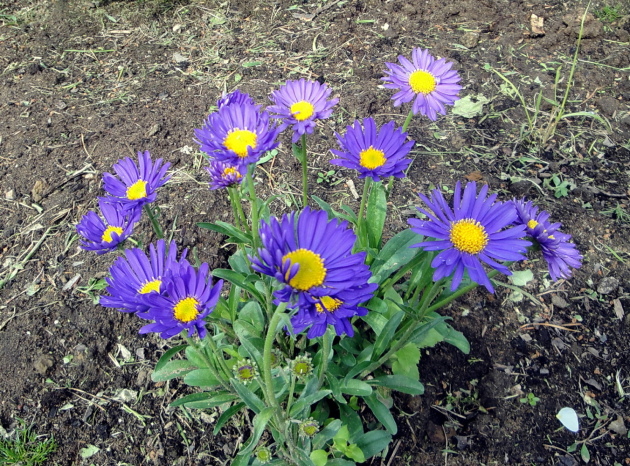
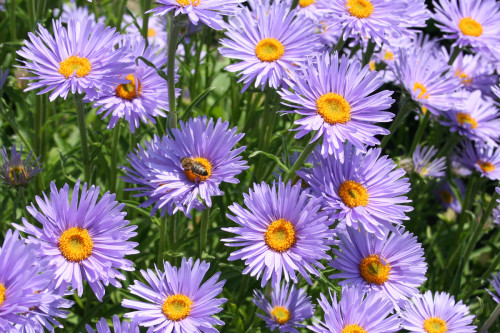
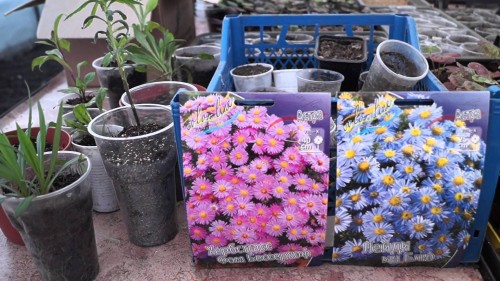
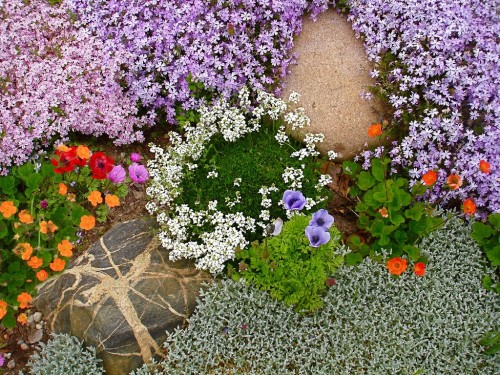
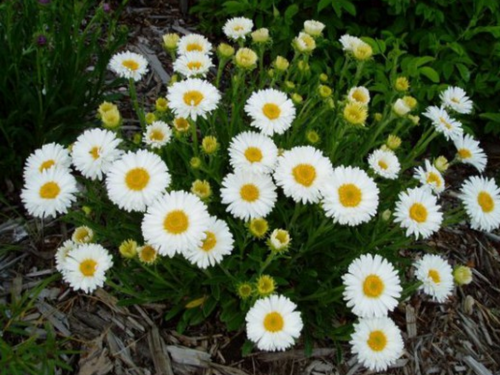

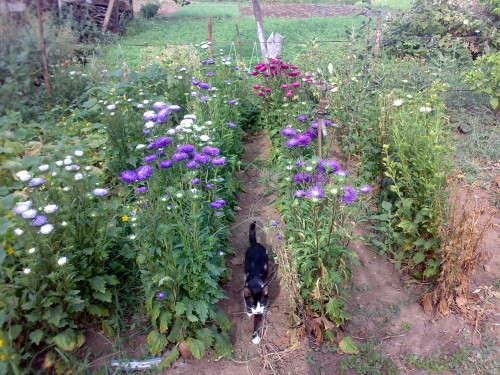
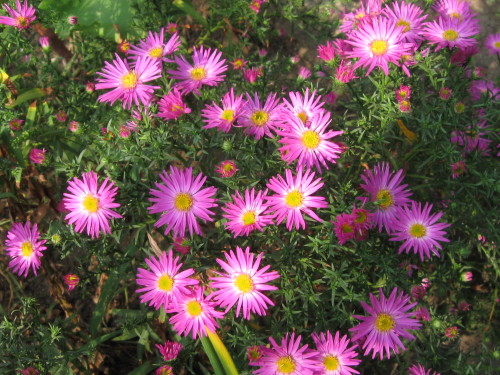
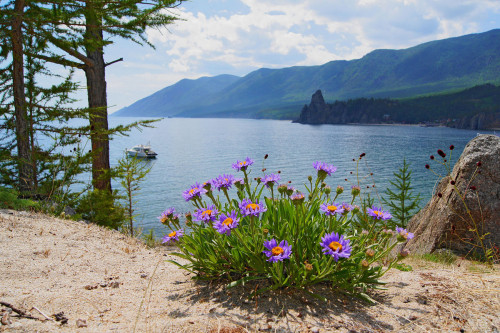
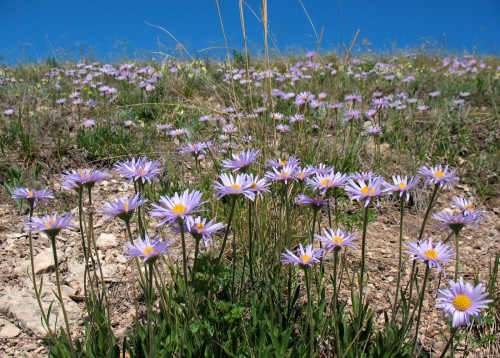
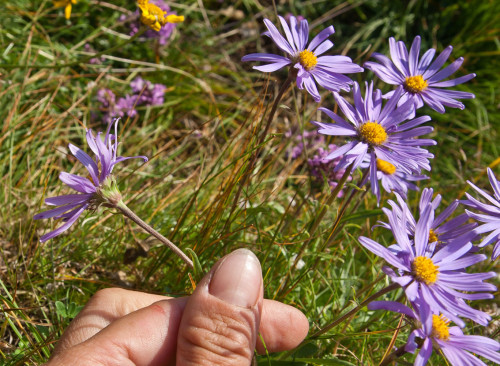
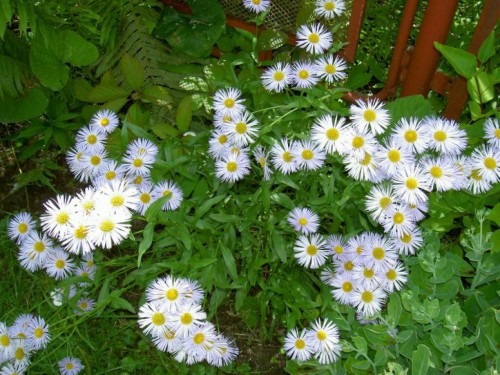












 Start a discussion ...
Start a discussion ...